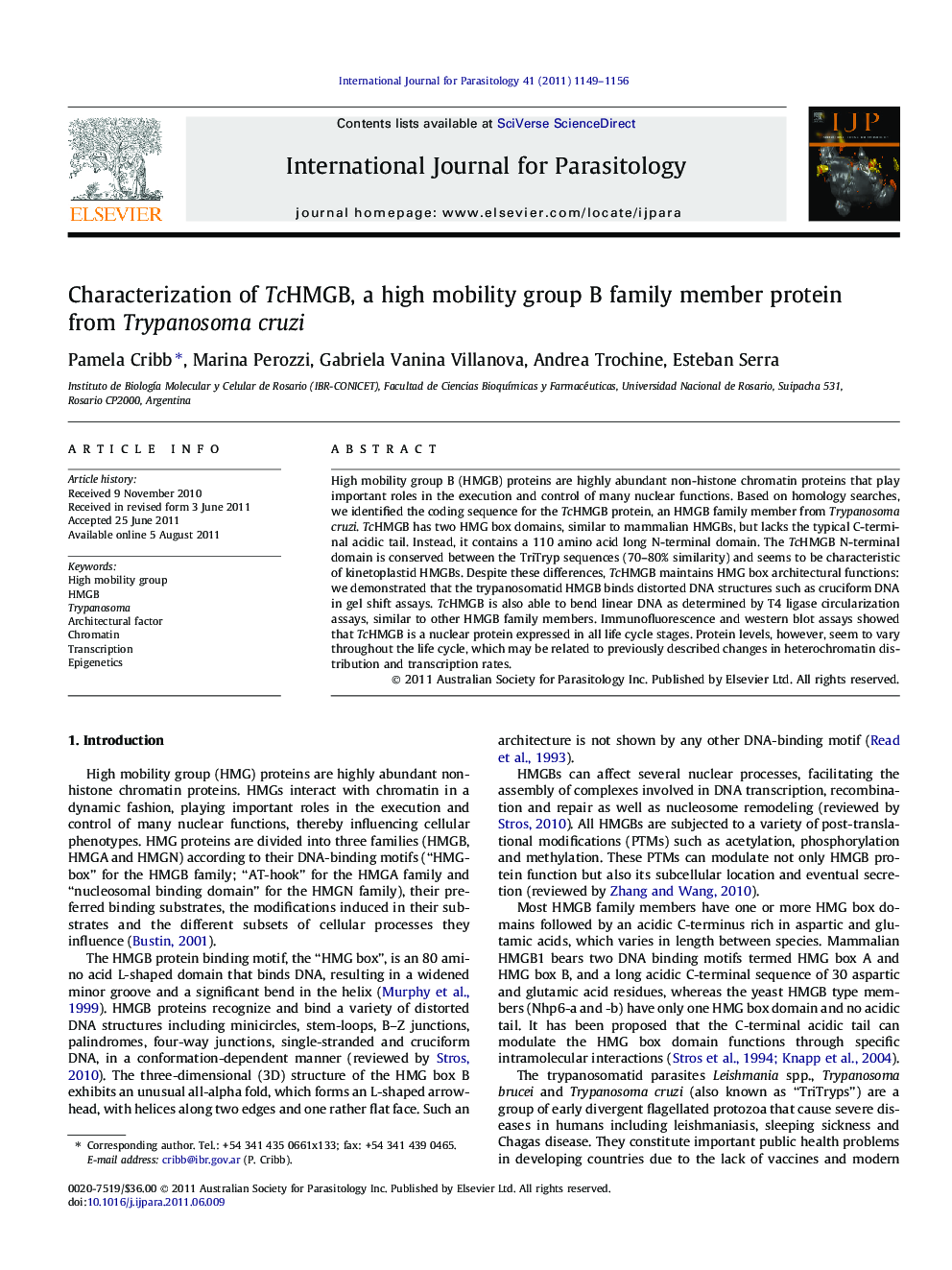| Article ID | Journal | Published Year | Pages | File Type |
|---|---|---|---|---|
| 2436188 | International Journal for Parasitology | 2011 | 8 Pages |
High mobility group B (HMGB) proteins are highly abundant non-histone chromatin proteins that play important roles in the execution and control of many nuclear functions. Based on homology searches, we identified the coding sequence for the TcHMGB protein, an HMGB family member from Trypanosomacruzi. TcHMGB has two HMG box domains, similar to mammalian HMGBs, but lacks the typical C-terminal acidic tail. Instead, it contains a 110 amino acid long N-terminal domain. The TcHMGB N-terminal domain is conserved between the TriTryp sequences (70–80% similarity) and seems to be characteristic of kinetoplastid HMGBs. Despite these differences, TcHMGB maintains HMG box architectural functions: we demonstrated that the trypanosomatid HMGB binds distorted DNA structures such as cruciform DNA in gel shift assays. TcHMGB is also able to bend linear DNA as determined by T4 ligase circularization assays, similar to other HMGB family members. Immunofluorescence and western blot assays showed that TcHMGB is a nuclear protein expressed in all life cycle stages. Protein levels, however, seem to vary throughout the life cycle, which may be related to previously described changes in heterochromatin distribution and transcription rates.
Graphical abstractFigure optionsDownload full-size imageDownload high-quality image (51 K)Download as PowerPoint slideHighlights► A high mobility group protein from Trypanosomacruzi (TcHMGB) is described. ►TcHMGB has two HMG boxes, lacks the acidic tail and has a unique amino terminal domain. ►TcHMGB is a nuclear architectural protein. ►TcHMGB expression varies along the life cycle. ►TcHMGB may be directly related to the heterochromatin content and transcription rates.
